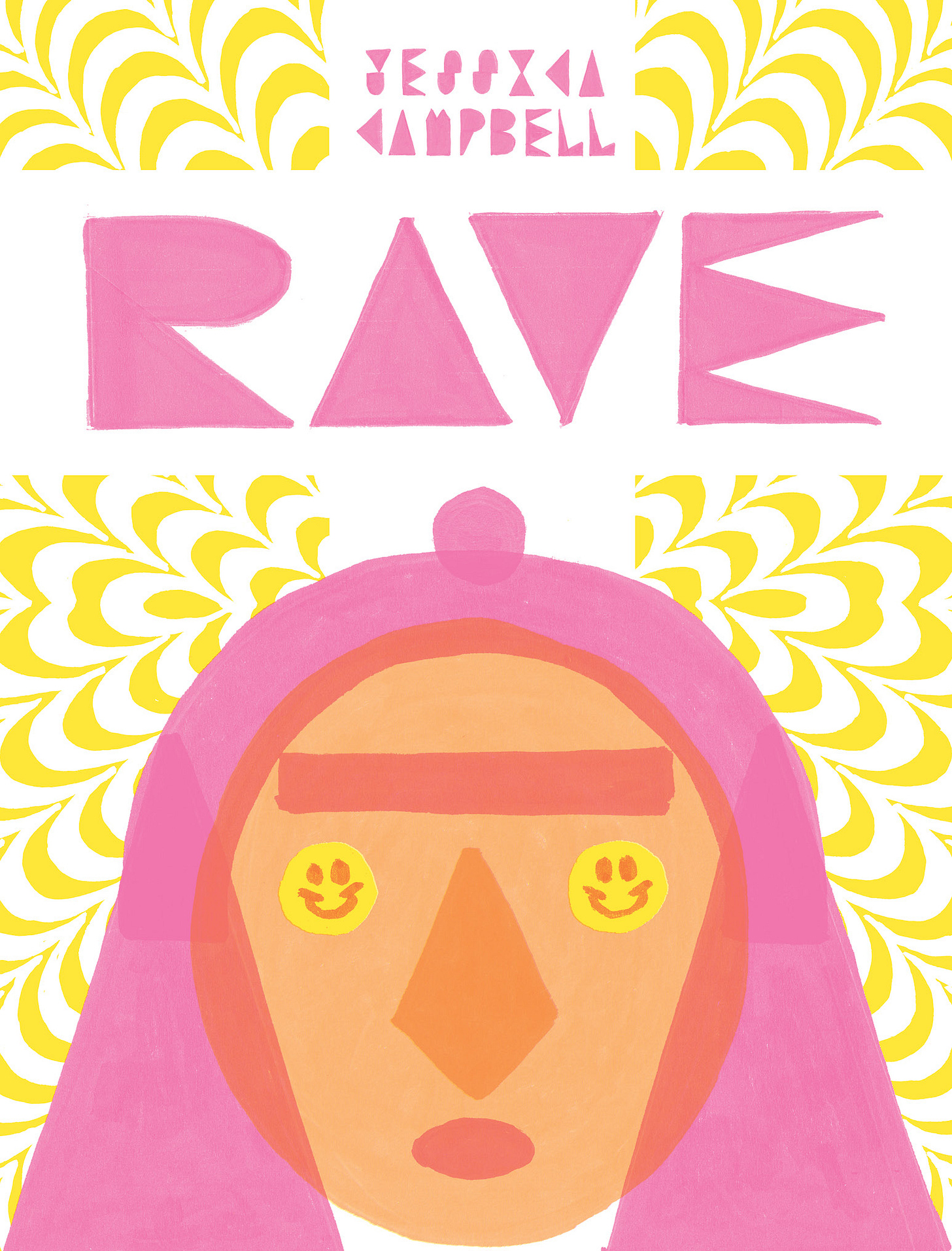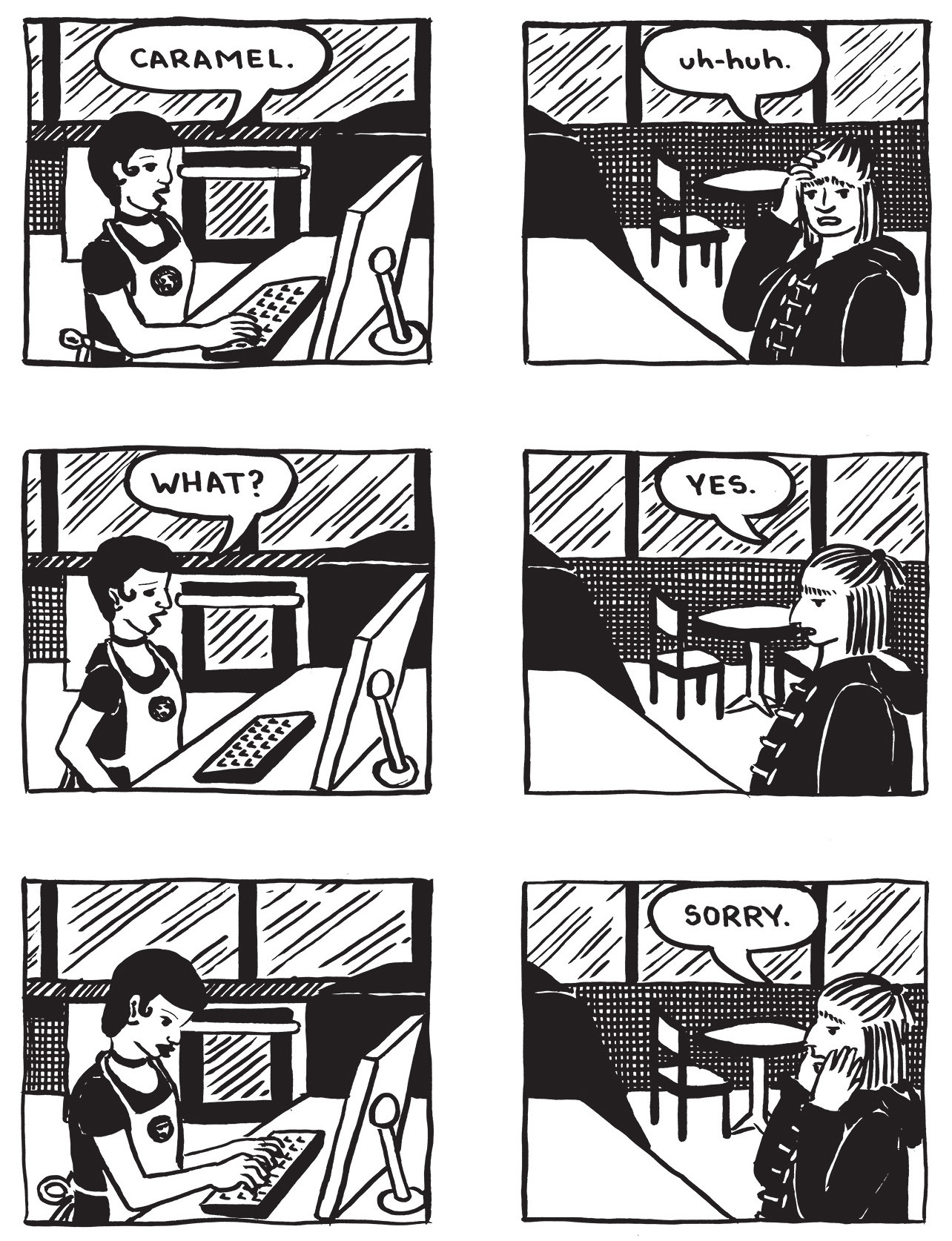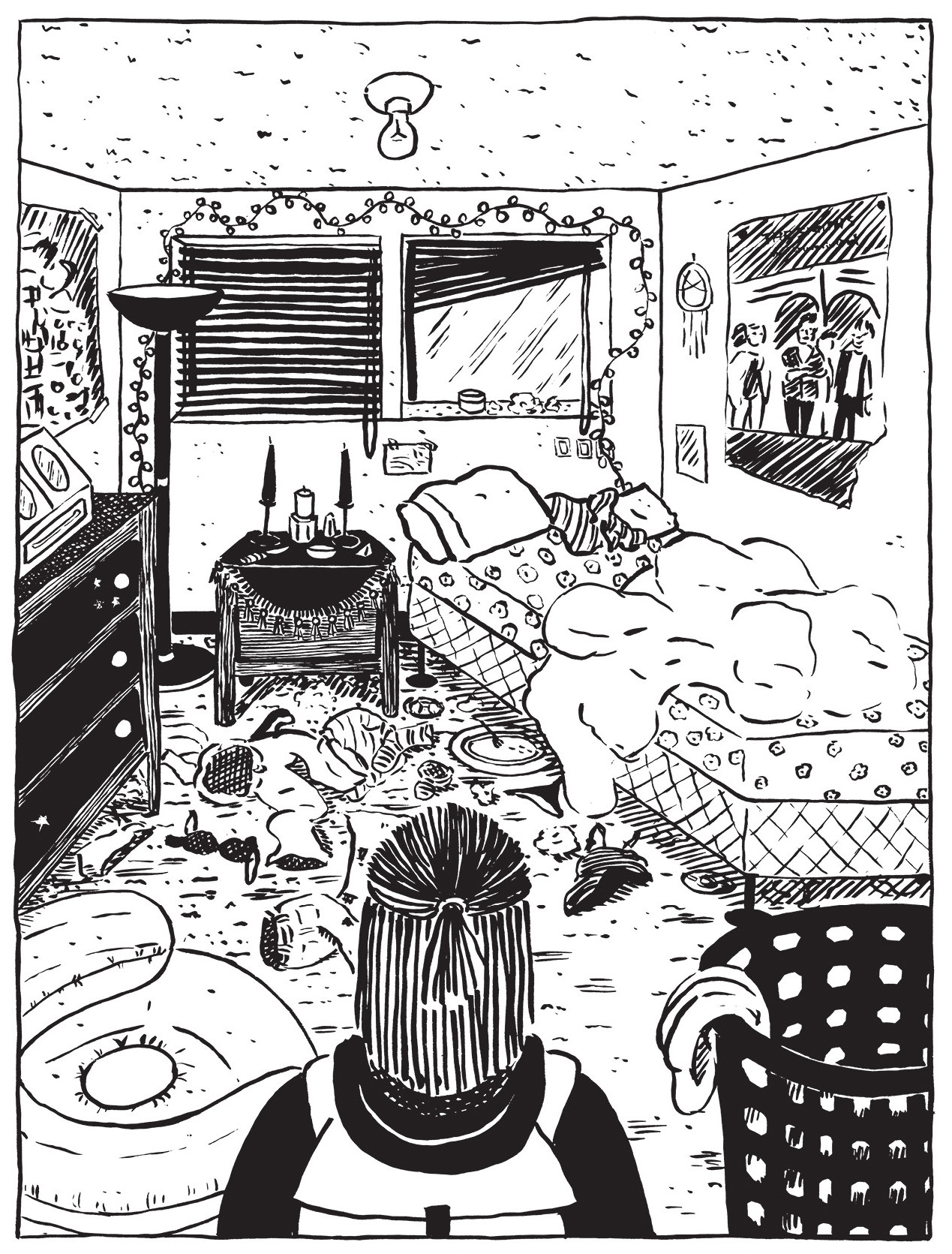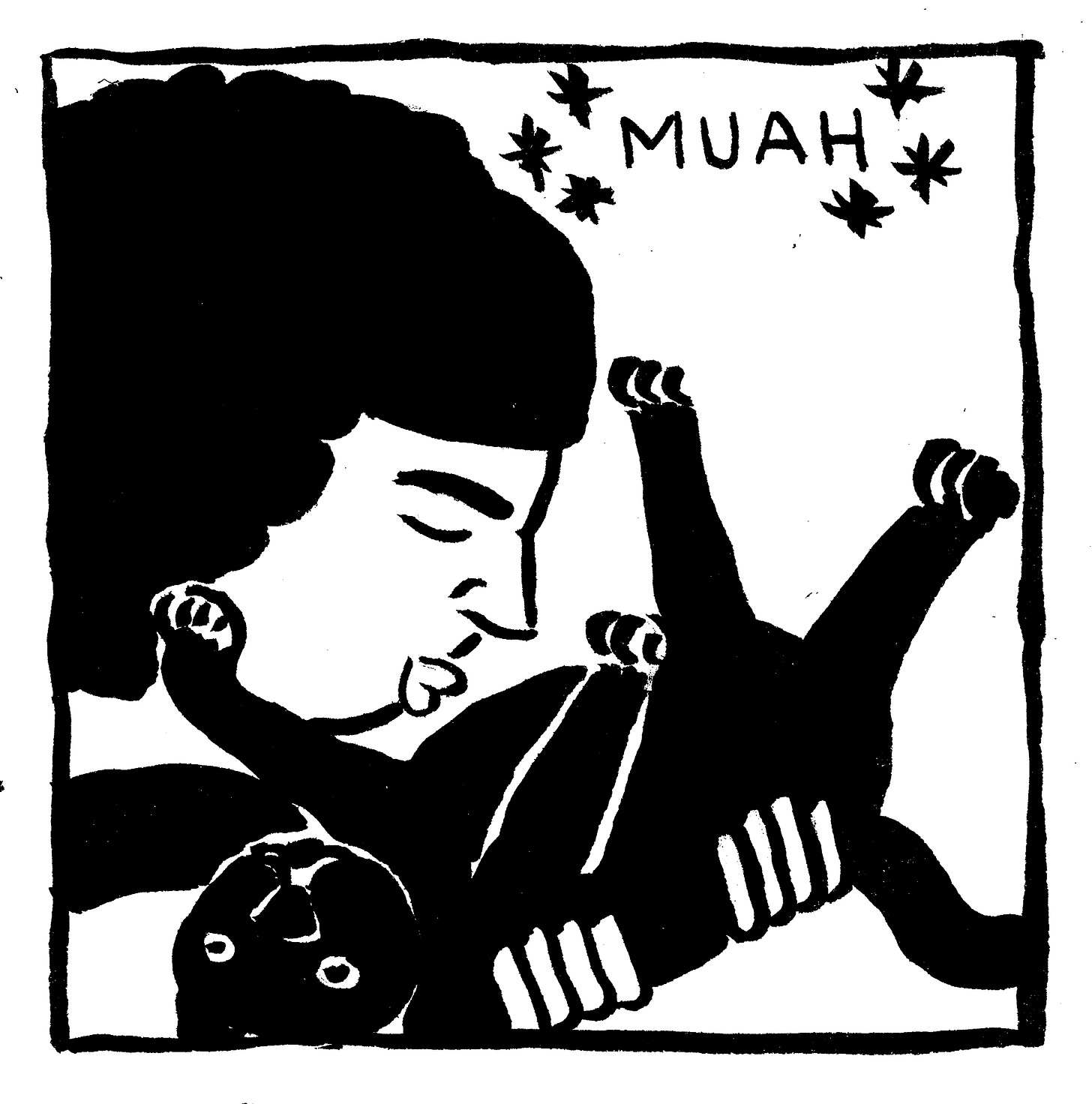Today we are breaking our general rule of talking mostly about autobiographical work to dive into a conversation with artist Jessica Campbell, whose compelling graphic novel Rave is out today. In this novel, which Campbell elsewhere calls “auto-bi-fictional-ography” after Lynda Barry, she draws upon her formal background in painting to explore a coming-of-age story where sexuality and Christianity collide.
Describe your comics journey--how did you get into making comics?
I became interested in comics as a teenager while working in a great bookstore called Munro’s (Victoria, British Columbia, Canada). This was in the early 2000s and the store was just starting to carry some graphic novels like Art Spiegelman’s Maus, Chester Brown’s I Never Liked You, and Neil Gaiman’s Sandman, all three of which were really important to me. From there I began reading more widely and when I moved to Montreal to go to Concordia University (for a BFA in painting and drawing), I was lucky enough to get a paid internship with Drawn & Quarterly, which ultimately turned into a job. It was during my time working for D+Q (about six years) that I got my real comics education, and had an ability to read a lot of what indie comics were being published in addition to meeting lots of great cartoonists, workers in the field and enthusiasts, many of whom are now my dearest friends and professional network.
However, while working for D+Q, I was too intimidated to make comics, and instead was painting and spending a lot of time making jokes on Facebook. In 2012, right as I was leaving D+Q and moving to Chicago to go to grad school, the cartoonist Chuck Forsman asked me if I wanted to do a zine of my Facebook jokes for his micro press, Oily. He did these really cool 8 page, B/W riso printed comics that sold for $1 each. He even told me that he could find an illustrator for me if I wanted, but I decided I could do a zine of jokes, which was called My Sincerest Apologies.
I made a few more zines for him as I was going through grad school, which was a nice relief for me, because I found the exposure/fishbowl nature of working in the grad studios a little challenging. Comics, on the other hand, were something that happened in a sketchbook or on small paper that could be squirreled away from view. Plus, very few of my peers there or people teaching at the grad level at SAIC actually read comics (a prof once said during a crit “I don’t know how to read comics and refuse to learn,” lol), and that meant it provided me some freedom from scrutiny and functioned a bit like a release valve.
I also met the group Trubble Club (cartoonists in Chicago who would get together and make jam comics) and got to participate with them for a few years, which was another great comics education. After a few years of doing small projects like these, Annie Koyama approached me about proposing something to her, and ultimately I did (though again it took me a few years due to my own insecurities about my work), and that first book became Hot or Not: 20th Century Male Artists.
From there I’ve continued to work on various projects and aim to challenge myself and improve my work with each. The most recent of these is Rave, a book that will be out from Drawn & Quarterly (full circle!) on April 12, 2022.
How did you develop your voice/unique comics style? How does working in multiple media influence your comics?
So I may have partially answered this with the last answer, but basically this is an ongoing process where each project informs the next.
The other facet of my work is more studio art. I studied painting but now work in a really interdisciplinary way: I make a lot of work out of carpet but also incorporate unorthodox materials into the work, largely in the fibers universe. Recently, for instance, I reupholstered a La-Z-Boy with car wash mitt material, a piece that’s going into a kind of “man cave” installation at the John Michael Kohler Art Center in Sheboygan, WI.
Fundamentally, I believe that comics and studio art communicate in different ways. Namely, comics are meant to be read and want to be narrative, whereas I think a La-Z-Boy covered in car wash mitt material is more about material and visual experience. It has specific connotations that may imply a narrative, but it is not overt in the way that comics most often are.
I have done projects where I try to blur the boundaries of these two to figure out where they could meet, which I find intriguing, but I’m not sure that my comics comics work, like Rave, is overtly influenced by the fibers work? Or I’m just not conscious of how that’s happening.
What drew you to creating this story about coming of age, a crisis of faith, and coming out?
I’ve wanted to write about the evangelical church for a long time, since I grew up in a very conservative Pentecostal church and it was a really formative part of my life. However, I did not want to write a strictly autobiographical book about this, and fiction allowed me to combine personal anecdotes and experiences with friends’ experiences, news pieces, imagined scenarios, etc.
I think part of what I wanted to highlight was the hypocrisy that I witnessed in that space. Like, there are all these people (not all Christians are like this of course) who claim to love their neighbors but also claim moral superiority and delight (if in a coded way) in the pain and suffering of others. Pat Robertson, whose mentor was really involved in the church I grew up in, has said things like the Haitian earthquake was penance for the Haitian Revolution. Like, how fucking heartless can you be? It’s disgusting to me. I think all humans can be hypocritical (I know I certainly am all the time), but how dare people claim ethical superiority while actively enforcing and celebrating the suffering of others.
For instance: I had this beautiful, kind, loving friend who always felt a lot of pressure to please men and to be attractive or whatever, which led to her ending up with shitty boyfriends who got her addicted to drugs, and, eventually, she overdosed and died. After her death, I knew some religious, patriarchal people who seemed to have this attitude like “it’s so sad that she died, but if only she’d followed Jesus or been a better person it wouldn’t have happened.” But meanwhile it is EXACTLY the repressive attitudes in places like the evangelical church (and the patriarchal culture writ large) that I think catalyzed her self destruction/low self esteem/whatever, and it just makes me want to SCREAM. Or people who condemn sex workers but then watch porn? Like, fuck off. I’m so angry about it. And I want other people to be aware of these cycles of violence and repression so that we can break out of them. My hope is that this book will be some small step in that direction.
Purchase RAVE here.
Jessica Campbell is a Canadian artist originally from Victoria, British Columbia. Her fine art has been exhibited across Canada and the USA and in 2019, she had a solo exhibit at the Museum of Contemporary Art in Chicago. An educator of comics art and history, Campbell has taught at a variety of institutions including the School of the Art Institute of Chicago. She is the author of the graphic novels Hot or Not: 20th Century Male Artists and XTC69.










Exciting! I, too, am from Victoria BC and did a BFA in painting at Concordia University. And though I'm lagging far behind Jessica in terms of trajectory, I too am a painter who's been exploring graphic memoir. I have a show coming up with all of this exploratory work, and then I'll be starting the paintings for the graphic memoir in earnest. AND I'll be buying Jessica's book.